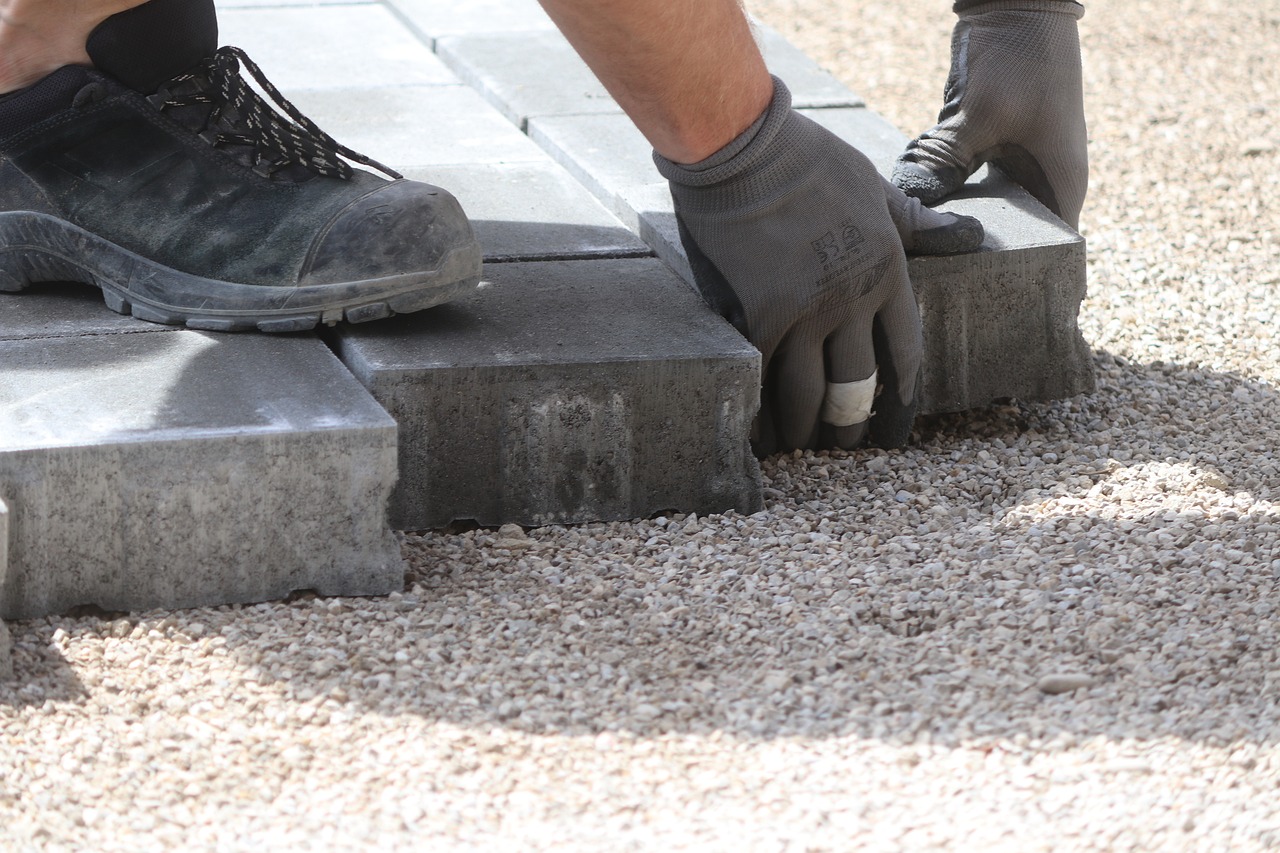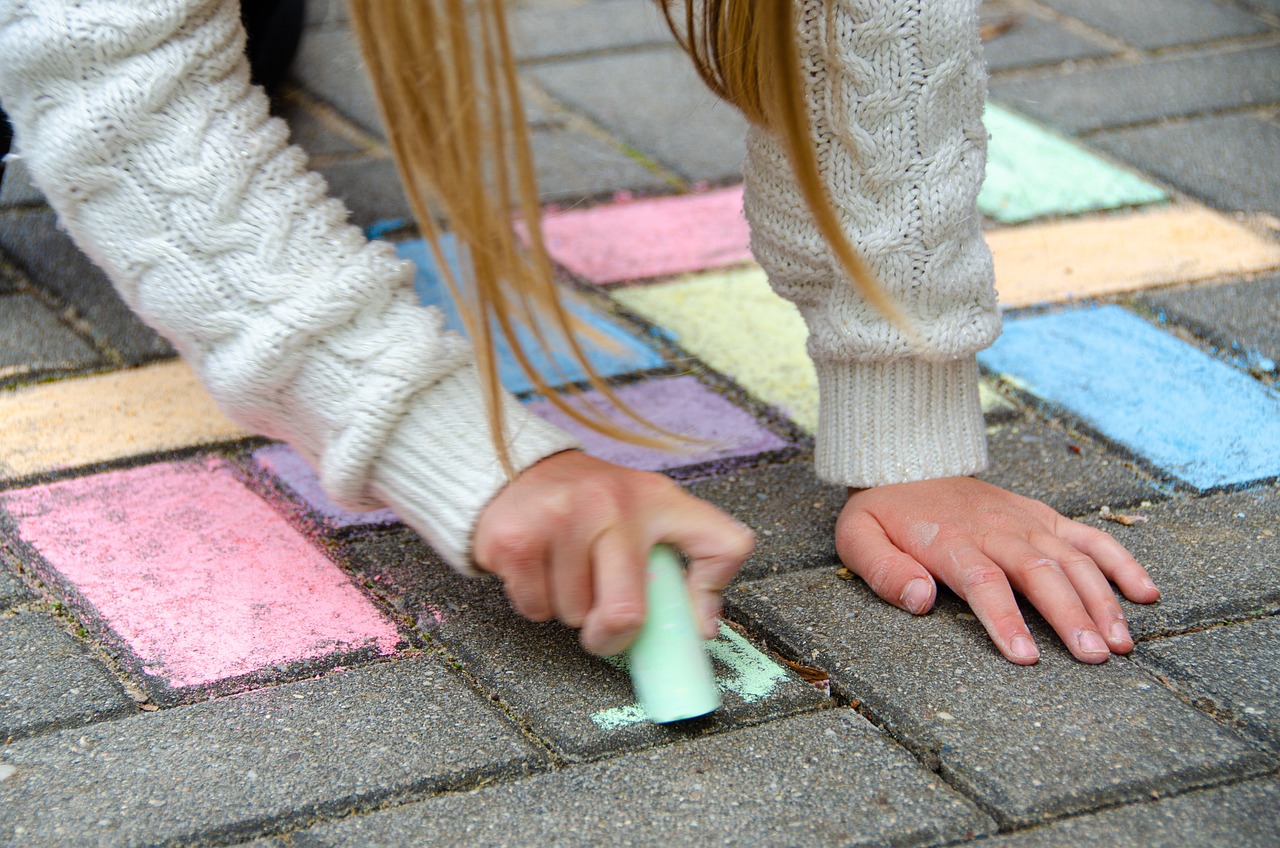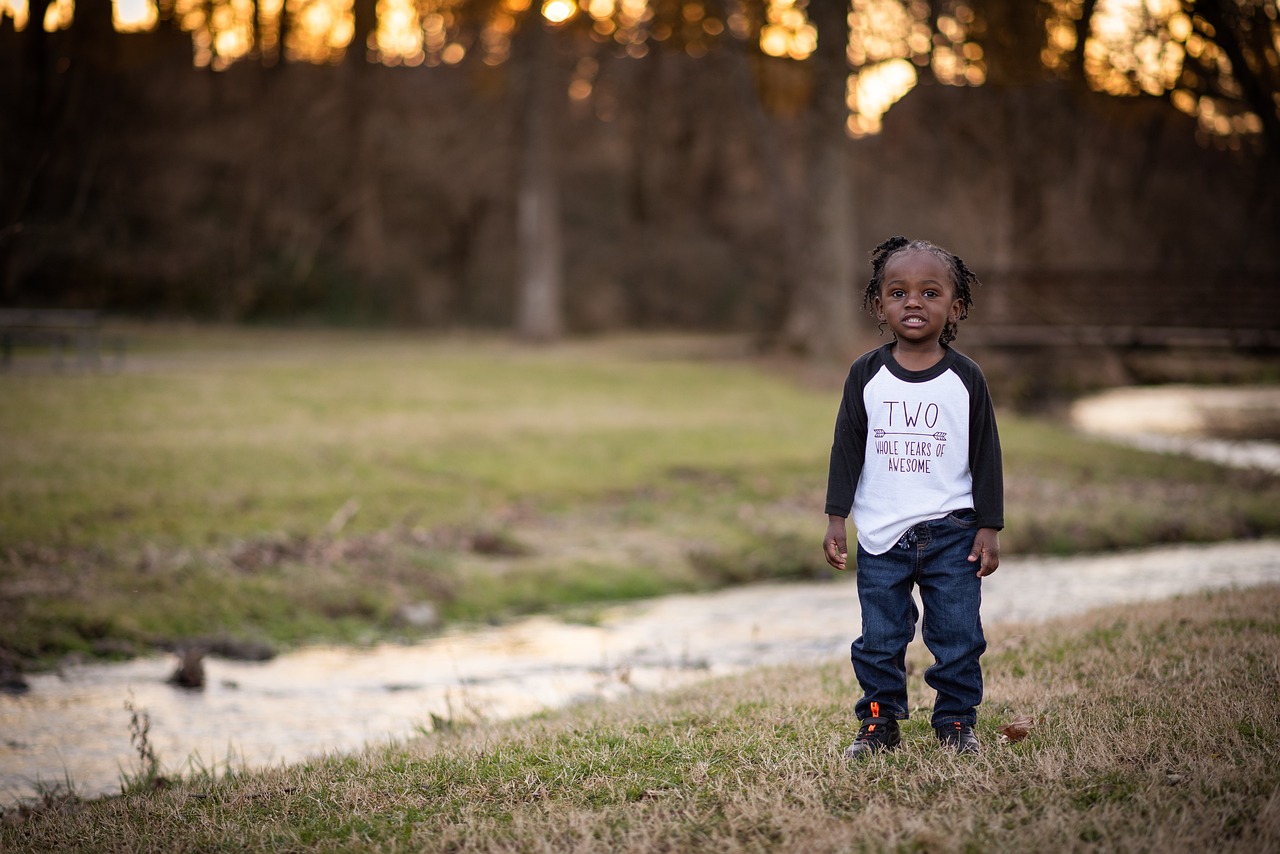Ensuring Child Safety in Entertainment Rooms
When it comes to creating a fun and engaging environment for children, entertainment rooms can be a magical place filled with laughter and joy. However, amidst the excitement, child safety must be the top priority. Imagine a room where children can play freely, but with every toy, every corner, and every piece of furniture, there lies a potential risk. It’s crucial to not only recognize these hazards but also to take proactive steps in ensuring a safe space where children can enjoy their leisure activities without worry.
In this article, we will delve into the various aspects of child safety in entertainment rooms, exploring effective measures and strategies to create an environment that allows children to play and explore while minimizing risks. From understanding potential hazards to designing safe spaces, we will cover it all. So, let’s embark on this journey to make entertainment rooms a haven for our little ones!
Identifying potential hazards in entertainment rooms is crucial for child safety. Think about it: sharp edges on furniture, small toys that can be swallowed, or even the possibility of a child tripping over scattered items. These risks can lead to serious injuries if not addressed properly. It's essential to maintain a vigilant eye and implement preventive measures to protect our children. Here are some common risks to be aware of:
- Sharp Objects: Items like scissors, broken toys, or even cornered furniture can cause cuts and bruises.
- Choking Hazards: Small toys or parts can easily end up in a child’s mouth, leading to choking.
- Falls: Cluttered floors or unstable furniture can lead to accidents and falls, which are particularly dangerous for active children.
By understanding these risks, we can take proactive steps to mitigate them and create a safer environment for our children to enjoy.
Creating a safe entertainment room involves thoughtful design choices. The layout and arrangement of furniture play a significant role in minimizing risks. For instance, ensuring that furniture is arranged in a way that allows ample space for movement can prevent collisions and falls. Additionally, incorporating safety gates can help keep children away from areas that may pose a risk, such as stairs or rooms with heavy equipment.
Selecting appropriate furniture is vital for safety. Opting for pieces with rounded edges, sturdy construction, and non-toxic materials can significantly reduce the risk of injury. Imagine a room filled with soft, inviting furniture that not only looks great but also protects our little ones from harm. This choice not only enhances the aesthetic of the room but also ensures that children can explore without the constant fear of getting hurt.
Incorporating soft play areas can significantly reduce injury risks. Think of this as creating a cozy nook where children can tumble and roll safely! Utilizing foam mats and soft toys can transform a standard entertainment room into a fun, safe haven for active children. The benefits of soft play areas include:
- Reducing the impact of falls.
- Encouraging imaginative play.
- Providing a comfortable space for younger children to explore.
Effective storage solutions help keep entertainment rooms organized and safe. Imagine walking into a room where everything has its place, and there’s no clutter to trip over. Secure storage for toys and equipment is essential in preventing accidents. Consider using bins with lids, shelves that are out of reach, or even labeled containers to teach children about organization. This not only keeps the space tidy but also instills a sense of responsibility in children regarding their belongings.
Active supervision is essential in ensuring child safety. As parents and caregivers, it’s our responsibility to monitor playtime closely. Being aware of potential dangers in the entertainment room allows us to intervene before accidents happen. Think of it as being a lifeguard at a pool; our watchful eyes can make all the difference in keeping kids safe while they enjoy their time playing. Remember, safety isn’t just about the environment but also about the presence of caring adults who can guide and protect.
Establishing clear safety rules for children is crucial. It’s like giving them a roadmap to navigate their playtime safely. Simple, understandable rules can promote safe behavior while enjoying entertainment activities. For instance, rules like “no running indoors” or “keep toys in designated areas” can help children remember what’s safe and what’s not. By reinforcing these rules consistently, we can cultivate a culture of safety in our entertainment rooms.
Teaching children about safety is a proactive approach. Engaging them in conversations about potential dangers and encouraging them to ask questions can empower them to make safe choices. Think of it as equipping them with a safety toolkit that they can carry with them wherever they go. Interactive methods, such as role-playing scenarios or using visual aids, can be effective in communicating safety concepts to young minds.
Promoting safe play practices helps minimize risks. Encouraging children to engage in safe behaviors, such as sharing and using toys appropriately, can create a more harmonious play environment. It’s like nurturing a garden; when we instill good habits, we see positive growth. Remember, the goal is to make safety a natural part of play, so children can enjoy their time without the shadow of danger looming over them.
Q: What are some common hazards in entertainment rooms?
A: Common hazards include sharp objects, choking hazards, and tripping risks due to clutter.
Q: How can I make my entertainment room safer for children?
A: You can make it safer by choosing child-friendly furniture, creating soft play areas, and keeping the space organized with effective storage solutions.
Q: Why is supervision important in entertainment rooms?
A: Supervision is crucial because it allows parents and caregivers to monitor playtime and intervene in case of potential dangers.
Q: How can I educate my children about safety?
A: Engage them in conversations about safety, use role-playing scenarios, and encourage them to ask questions about their environment.

Understanding the Risks
When it comes to creating a fun and engaging entertainment room for children, it’s easy to get caught up in the excitement of colorful decor, plush toys, and interactive games. However, amid all the fun, we must not overlook the potential risks that lurk in these spaces. Understanding these risks is the first step towards ensuring a safe environment for our little ones. After all, **safety should be our top priority**!
One of the most common hazards in entertainment rooms is the presence of sharp objects. Whether it’s the corners of furniture, the edges of a toy, or even scissors left out from a craft project, these items can pose serious threats to curious children who are prone to exploring their surroundings. Imagine a child running around, only to accidentally bump into a corner table. Ouch! That’s a trip to the doctor waiting to happen. Therefore, it is essential to regularly inspect the room for any sharp edges and take necessary precautions.
Another significant risk is choking hazards. Toys with small parts, coins, or even food items can easily find their way into a child’s mouth, leading to choking incidents. To mitigate this risk, it’s crucial to keep an eye on the types of toys available in the room. Opt for toys that are age-appropriate and free from small detachable parts. Additionally, educating caregivers about the importance of supervising playtime can further reduce these risks.
Falls are yet another common cause of injury in entertainment rooms. Whether it’s a child climbing onto furniture or tripping over scattered toys, falls can happen in the blink of an eye. To minimize this risk, consider the layout of the room. Ensure that the floor is free from clutter and that any furniture is stable and secure. You might even want to include soft flooring options, such as foam mats, to cushion any accidental falls. It’s all about creating an environment where children can play freely without the constant fear of injury.
Moreover, it’s essential to be vigilant about the electrical hazards present in entertainment rooms. Exposed wires, overloaded outlets, and cords from electronic devices can create dangerous situations. To combat this, use cord organizers to keep wires tidy and out of reach. Additionally, consider using outlet covers to prevent curious fingers from poking around where they shouldn’t.
In summary, understanding the risks associated with entertainment rooms is vital for child safety. By being aware of sharp objects, choking hazards, falls, and electrical dangers, we can take proactive steps to create a safer play environment. Remember, a well-prepared space is the key to **peace of mind** for parents and **endless fun** for children!

Designing Safe Spaces
When it comes to creating a secure environment for children in entertainment rooms, is not just a good idea—it's a necessity. Imagine a room where your kids can laugh, play, and express their creativity without the constant worry of accidents lurking around every corner. This vision can be realized through thoughtful design choices that prioritize safety without sacrificing fun.
One of the first steps in designing a safe entertainment room is to consider the layout. Arranging furniture in a way that maximizes open space can significantly reduce the risk of falls and collisions. For instance, placing larger furniture items against the walls creates a clear play area in the center, allowing children to move freely. Additionally, using non-slip rugs can help prevent slips and falls, especially in areas where the floor may be slick.
Another essential element is the use of padding. Soft surfaces can be a game-changer when it comes to safety. Consider incorporating padded furniture or using foam mats to cover hard floors. This not only cushions falls but also creates a cozy atmosphere where children feel comfortable playing. The benefits of soft play areas can't be overstated; they provide a safe haven for active kids to explore and engage in physical activities without the fear of injury.
Furthermore, utilizing safety gates can effectively section off areas that may pose risks, such as staircases or rooms with delicate items. These gates act as a physical barrier, ensuring that children stay within safe zones while allowing parents and caregivers peace of mind. It's like having a protective shield that keeps little explorers from wandering into potentially hazardous areas.
When selecting furniture, it’s crucial to choose child-friendly options. Look for pieces that feature rounded edges to minimize the risk of bumps and bruises. Sturdy construction is also vital; furniture that can withstand the wear and tear of active play is essential. Moreover, opting for non-toxic materials ensures that the environment is safe for children, as they often have a tendency to explore with their mouths.
In addition to furniture choices, effective storage solutions play a pivotal role in maintaining a safe space. Clutter can lead to accidents, so having designated areas for toys and equipment is key. Consider using bins with secure lids or shelves that are out of reach for younger children. This not only keeps the room organized but also teaches kids the importance of putting things away after playtime. A tidy room is a safer room!
In conclusion, designing safe spaces for children in entertainment rooms requires a blend of creativity and practicality. By focusing on furniture arrangement, incorporating soft play areas, utilizing safety gates, selecting child-friendly furniture, and implementing effective storage solutions, you can create an environment that is both fun and secure. Remember, a well-designed space not only protects children but also enhances their play experience, allowing them to explore their imaginations without fear.
- What are some common hazards in entertainment rooms? Common hazards include sharp objects, choking hazards from small toys, and the risk of falls from unstable furniture.
- How can I make my entertainment room safer? You can enhance safety by arranging furniture to create open spaces, using padded surfaces, and installing safety gates where necessary.
- What type of furniture is best for children's play areas? Look for furniture with rounded edges, sturdy construction, and non-toxic materials to ensure a safe play environment.
- How important is supervision in entertainment rooms? Active supervision is crucial to ensure that children are playing safely and to intervene when potential dangers arise.

Choosing Child-Friendly Furniture
When it comes to creating a safe entertainment room for children, choosing the right furniture is paramount. You might think that any piece of furniture will do, but in reality, every choice you make can significantly impact your child's safety. For instance, opting for furniture with rounded edges is a simple yet effective way to prevent injuries. Sharp corners can easily lead to nasty bumps and bruises, especially when kids are in the middle of their playful antics. Think of it like navigating a maze—every corner turned should be safe and inviting, not a potential hazard.
Moreover, the construction of the furniture matters just as much as its design. Sturdy, well-built pieces ensure that they can withstand the roughhousing and energetic play that children often engage in. Imagine a chair that tips over at the slightest nudge; that’s not just inconvenient—it can lead to serious accidents. Therefore, investing in high-quality furniture that can endure the test of time (and playful kids) is a wise choice.
Another crucial aspect to consider is the materials used in the furniture. Non-toxic materials are essential, especially for children who are prone to putting things in their mouths. You wouldn’t want your little one gnawing on a table leg made of harmful chemicals, would you? Opt for furniture made from natural woods or certified non-toxic finishes. It’s like choosing healthy snacks over junk food; the right materials contribute to a safer environment.
To give you a clearer picture, here’s a quick comparison of child-friendly furniture features:
| Feature | Importance |
|---|---|
| Rounded Edges | Reduces risk of injury from sharp corners |
| Sturdy Construction | Prevents tipping and ensures durability |
| Non-Toxic Materials | Ensures safety if children chew or lick surfaces |
In addition to these features, consider the size and scale of the furniture. It should be proportionate to the children using it. A chair that’s too tall or a table that’s too high can lead to awkward situations—like a toddler trying to climb up for a snack and falling off. Instead, choose furniture that fits their size, allowing them to engage comfortably and safely with their surroundings.
Lastly, don’t forget about the aesthetic appeal. While safety is the top priority, a fun and colorful environment can enhance a child's experience. Look for furniture that not only meets safety standards but also sparks joy and creativity. After all, a happy child is often a safe child, as they’re more engaged and less likely to engage in risky behavior. So, when you’re out shopping for that perfect chair or table, keep these factors in mind to create a safe haven for your little ones.

Soft Play Areas
Creating within entertainment rooms is a game-changer when it comes to ensuring child safety. Imagine a space where children can bounce, roll, and tumble without the constant worry of injury. By incorporating soft play elements, parents can transform a typical entertainment room into a haven of fun and safety. The use of foam mats and soft toys not only cushions falls but also encourages active play, which is essential for a child's development.
One of the primary benefits of soft play areas is their ability to absorb impact. When children are engaged in play, it’s natural for them to get a little wild. They might leap off couches, run around, or even engage in friendly wrestling matches. This is where soft surfaces come in handy. By laying down high-density foam mats, you create a safe landing zone that can significantly reduce the risk of injuries. These mats come in various colors and designs, making them visually appealing and fun for kids.
Moreover, soft play areas can be designed to stimulate a child's imagination and creativity. Think about adding elements like soft blocks, inflatable structures, or even small climbing frames. These features not only provide a safe environment but also encourage physical activity and social interaction among children. When kids are busy exploring and playing, they’re less likely to engage in risky behaviors that could lead to accidents.
However, it’s essential to ensure that these soft play areas are regularly maintained and cleaned. Hygiene is crucial, especially in spaces where children frequently play. Parents should routinely check for any wear and tear on soft toys and mats, replacing them as necessary to maintain a safe environment. Additionally, establishing a cleaning routine helps prevent the spread of germs, keeping playtime fun and safe.
In conclusion, integrating soft play areas into entertainment rooms is not just about safety; it’s about creating an environment where children can thrive. By providing them with a space that encourages safe, active play, you’re not only protecting them from potential injuries but also fostering their physical and social development. So, if you haven’t yet considered the benefits of soft play areas, now is the perfect time to rethink your entertainment room setup!
- What materials are best for soft play areas?
High-density foam mats and non-toxic soft toys are ideal for creating safe and enjoyable play areas.
- How can I maintain hygiene in soft play areas?
Regular cleaning and inspecting of toys and mats are essential. Use child-safe disinfectants to keep the area germ-free.
- Are soft play areas suitable for all ages?
While primarily designed for younger children, soft play areas can be adapted for older kids with appropriate structures and challenges.

Storage Solutions
When it comes to ensuring child safety in entertainment rooms, effective storage solutions play a pivotal role. A cluttered space can quickly become a hazardous environment for children, leading to trips, falls, and accidental injuries. Imagine a room where toys are strewn about like confetti after a party; it’s not just messy but also a recipe for disaster. By organizing the space strategically, we can create a safer haven for playtime.
First and foremost, consider the types of storage options available. Opt for bins, baskets, and shelves that are easy for children to access, yet high enough to keep dangerous items out of reach. For instance, clear plastic bins allow kids to see their toys, encouraging them to put things away after they’re done playing. This not only maintains order but also instills a sense of responsibility in young ones. However, be cautious with heavy items; ensure that shelves are anchored securely to the wall to prevent tipping.
Additionally, labeling storage containers can be a game-changer. Use pictures or color-coded labels to help children identify where each toy belongs. This approach not only makes clean-up easier but also fosters independence. Imagine a child proudly returning their blocks to the labeled bin, knowing exactly where it goes. It’s those little victories that build confidence!
Another key aspect is to create designated zones for different types of activities. For example, have a specific area for arts and crafts, complete with storage for supplies like crayons, papers, and scissors. This not only keeps everything organized but also helps children understand where to find what they need, reducing the chances of rummaging through unsafe items. You can even use a small table with built-in storage for arts and crafts to keep everything contained.
Lastly, remember to regularly assess the storage solutions you have in place. As children grow, their needs change, and so should your organization methods. What worked for a toddler may not suffice for a curious five-year-old. Stay proactive by adjusting storage solutions to fit their developmental stages. This adaptability ensures that safety remains a priority as your child explores their environment.
- What type of storage is best for toys? Look for bins and shelves that are child-sized and easy to access, while being sturdy enough to hold various toys.
- How can I teach my child to clean up after playtime? Make it fun by turning clean-up into a game or using a timer to see how quickly they can tidy up.
- Are there any safety concerns with storage solutions? Yes, ensure that heavy items are secured and that shelves are anchored to prevent tipping. Avoid sharp edges on storage furniture.

Supervision and Monitoring
This article discusses the importance of child safety in entertainment rooms, exploring various measures and strategies to create a secure environment for children while they enjoy their leisure activities.
Identifying potential hazards in entertainment rooms is crucial for child safety. This section outlines common risks such as sharp objects, choking hazards, and falls, emphasizing the need for vigilance and preventive measures.
Creating a safe entertainment room involves thoughtful design choices. This section covers essential elements like furniture arrangement, padding, and the use of safety gates to minimize risks and enhance child safety.
Selecting appropriate furniture is vital for safety. This subheading discusses the importance of rounded edges, sturdy construction, and non-toxic materials in ensuring a safe environment for children to play.
Incorporating soft play areas can significantly reduce injury risks. This section highlights the benefits of using foam mats and soft toys to create a safer play environment for active children.
Effective storage solutions help keep entertainment rooms organized and safe. This part discusses the importance of secure storage for toys and equipment to prevent clutter and potential accidents.
Active supervision is essential in ensuring child safety. Just think about it: children are naturally curious and energetic, often exploring their surroundings with little regard for potential dangers. As parents and caregivers, our role is to be vigilant, providing a watchful eye as they engage in play. It's not just about being present; it's about being actively involved in their activities. By doing so, we can quickly identify any unsafe behavior or potential hazards that may arise.
Consider the following strategies for effective supervision:
- Be Engaged: Instead of just watching from a distance, participate in their play. This not only helps you monitor their safety but also enhances the bonding experience.
- Set Boundaries: Establish clear play zones within the entertainment room. This helps children understand where they can safely play and where they should avoid.
- Limit Distractions: When supervising, try to minimize distractions. Put away your phone and focus on the children. This way, you'll be more aware of any potential risks.
Additionally, it's crucial to recognize that supervision isn't just about being physically present; it's also about being mentally present. Engage in conversations with your children about what they are doing and the importance of safety. Ask them questions like, "What do you think could happen if you climb on that?" This encourages them to think critically about their actions.
Moreover, consider using technology to assist in supervision. Baby monitors and cameras can provide extra peace of mind, especially if you need to step away for a moment. However, these should never replace direct supervision. Always prioritize being in the same room as your children when they are playing.
In conclusion, effective supervision and monitoring are key components of child safety in entertainment rooms. By being engaged, setting boundaries, and minimizing distractions, you can create a safer environment for your children to enjoy their playtime. Remember, safety is a shared responsibility, and your attentiveness can make all the difference.
Establishing clear safety rules for children is crucial. This section provides guidance on creating simple, understandable rules that promote safe behavior while enjoying entertainment activities.
Teaching children about safety is a proactive approach. This subheading discusses effective methods for educating kids about potential dangers and encouraging them to follow safety guidelines during playtime.
Promoting safe play practices helps minimize risks. This section explores strategies for encouraging children to engage in safe behaviors, such as sharing and using toys appropriately in the entertainment room.
Q: What are the most common hazards in entertainment rooms?
A: Common hazards include sharp objects, choking hazards from small toys, and the risk of falls from climbing furniture or tripping over scattered items.
Q: How can I make my entertainment room safer for my children?
A: You can make your entertainment room safer by choosing child-friendly furniture, creating soft play areas, and ensuring effective storage solutions for toys and equipment.
Q: Why is supervision important in ensuring child safety?
A: Supervision is vital because it allows parents and caregivers to monitor children's activities, quickly identify potential risks, and engage in safe play practices.
Q: What rules should I establish for children in the entertainment room?
A: Establish clear rules such as no running indoors, sharing toys, and asking for help when needed. Make sure these rules are simple and easily understandable for children.

Implementing Safety Rules
Establishing clear safety rules for children is not just a good idea—it's essential. Think of safety rules as the guiding stars that help navigate the sometimes chaotic universe of playtime. When children understand what is expected of them, they are more likely to engage in safe behavior. So, how do we go about creating these rules? It starts with simplicity. Rules should be straightforward, easy to remember, and communicated in a way that resonates with kids. For instance, instead of saying, “Don’t run in the entertainment room,” you might say, “Let’s walk calmly so everyone stays safe!” This not only conveys the message but also encourages a cooperative spirit among children.
To effectively implement these safety rules, consider involving your children in the process. Ask them what they think makes a safe play environment and incorporate their ideas. This not only empowers them but also helps them feel a sense of ownership over their safety. You could even create a “Safety Rules Chart” together, filled with colorful drawings and stickers. This visual representation serves as a constant reminder of the guidelines and can be placed in a prominent location within the entertainment room.
Moreover, repetition is key. Regularly review the safety rules with your children, especially before they begin playtime. You might say, “Remember, we walk, we share, and we keep our toys on the mat!” This kind of reinforcement helps solidify the rules in their minds. Additionally, consider rewarding good behavior. Positive reinforcement can be a powerful tool. When children follow the rules, praise them or offer small incentives, like extra playtime or a fun activity. This not only motivates them to adhere to the rules but also makes safety a fun aspect of their play.
Another crucial element in implementing safety rules is to lead by example. Children are like little sponges, soaking up everything they see. If they observe adults following safety protocols, they are more likely to mimic those behaviors. For instance, if you consistently remind them to put toys away after use, they will learn the importance of maintaining a tidy and safe environment.
Lastly, it’s essential to be flexible. As children grow and develop new skills, their understanding of safety will evolve too. Regularly assess the rules and adjust them as necessary. For example, as children become more adept at playing, you might introduce new rules to challenge them while keeping safety in mind. This adaptability not only keeps the environment safe but also keeps the children engaged and learning.
In summary, implementing safety rules is a dynamic process that involves communication, creativity, and consistency. By making safety a collaborative effort, you not only protect your children but also foster a sense of responsibility and awareness in them. Remember, a safe entertainment room is a happy entertainment room!
- What are the most important safety rules for children in entertainment rooms?
Key rules include walking instead of running, sharing toys, and keeping the area tidy to prevent trips and falls.
- How can I make safety rules engaging for my kids?
Involve them in creating the rules, use visuals like charts, and offer rewards for following the rules.
- What should I do if my child ignores safety rules?
Reiterate the importance of the rules calmly, and consider discussing the consequences of unsafe behavior.

Educating Children on Safety
When it comes to keeping our little ones safe, education is the key. Imagine teaching a child about safety as planting a seed; with the right nurturing, it can grow into a strong tree of awareness that protects them throughout their lives. The goal is to create a solid foundation of knowledge that empowers children to recognize potential hazards and make safe choices during their playtime in entertainment rooms. Start by introducing simple concepts of safety in a fun and engaging way. Use stories, games, and even role-playing to make the lessons memorable and enjoyable.
One effective method is to create a “Safety Adventure” game where children can explore the entertainment room while identifying potential dangers. For instance, you could set up a scavenger hunt where they look for items that are safe and unsafe, helping them learn through discovery. This interactive approach not only makes the learning process enjoyable but also reinforces their understanding of safety in a practical context.
Additionally, it’s essential to incorporate discussions about safety rules into everyday conversations. Use everyday situations as teaching moments. For example, if you notice your child climbing on furniture, gently remind them of the importance of keeping their feet on the ground. By consistently reinforcing these messages, children will start to internalize the importance of safety.
Here are some key points to cover when educating children about safety:
- Recognizing Hazards: Teach children to identify sharp objects, choking hazards, and other potential dangers in their play area.
- Understanding Boundaries: Explain the importance of staying within designated play areas and not wandering off.
- Using Equipment Properly: Encourage them to use toys and equipment as intended, emphasizing that misuse can lead to accidents.
- Asking for Help: Instill the idea that it’s okay to ask an adult for help if they feel unsure or unsafe.
Moreover, consider creating a “Safety Charter” with your children, where they can contribute their ideas about what they think is safe and what isn’t. This not only empowers them but also gives them a sense of ownership over their safety. Display this charter in the entertainment room as a constant reminder of the safety principles they’ve learned.
Finally, it’s crucial to lead by example. Children are keen observers; they will mimic the behavior of adults around them. If they see you practicing safety—like putting away toys after playtime or using equipment correctly—they’re more likely to follow suit. Remember, teaching children about safety isn’t a one-time conversation; it’s an ongoing dialogue that evolves as they grow and encounter new situations.
Q: At what age should I start teaching my child about safety?
A: It's never too early to start! You can begin teaching basic safety concepts as soon as your child starts to explore their environment, typically around 1-2 years old. Tailor your lessons to their developmental stage.
Q: How can I make safety lessons engaging for my child?
A: Use interactive methods like games, storytelling, and role-playing. Incorporating visuals and hands-on activities can also make learning about safety more enjoyable.
Q: What should I do if my child refuses to follow safety rules?
A: Stay calm and patient. Reinforce the rules consistently and explain the reasons behind them. Sometimes, a little role-play or a safety reminder can help them understand the importance of following the rules.
Q: How often should I revisit safety lessons with my child?
A: Regularly discussing safety is important, especially as your child grows and encounters new experiences. Make it a part of your routine, and use real-life situations as teaching moments.

Encouraging Safe Play Practices
Encouraging safe play practices is not just about setting rules; it’s about creating an environment where children feel empowered to make safe choices while having fun. Imagine a world where kids can explore, laugh, and play without the constant worry of getting hurt. Sounds dreamy, right? Well, with a few proactive strategies, we can turn that dream into reality.
One effective way to promote safe play is by modeling behavior. Kids often mimic what they see, so when parents and caregivers demonstrate safe practices, children are more likely to follow suit. For instance, if you show your child how to gently share toys or take turns, they’ll learn that playtime is more enjoyable when everyone feels safe and included. Plus, it sets a great example of kindness and cooperation!
Another key aspect of encouraging safe play is creating designated play zones. By setting up specific areas for different activities, you can help children understand where it's safe to run, jump, or engage in more vigorous play. For example, you might have a soft play area filled with cushions and foam mats for those energetic moments, while designating another corner for quieter activities like reading or drawing. This not only keeps them safe but also helps them learn to respect boundaries.
It’s also essential to communicate openly with your children about safety. Use simple language and relatable scenarios to explain potential dangers. For example, you might say, “We need to be careful with the blocks because we don’t want anyone to trip and fall.” Engaging them in conversations about safety helps them understand the importance of being cautious while still enjoying their playtime.
Furthermore, incorporating fun safety games can make learning about safe play practices enjoyable. You could create a game where children identify safe and unsafe behaviors during play. For example, ask them to point out which toys are appropriate for sharing and which ones might lead to arguments. By turning safety into a game, you’re not only teaching them valuable lessons but also making it a memorable experience.
Lastly, remember that positive reinforcement goes a long way. Celebrate safe play behaviors with praise or small rewards. When children know that their safe actions are recognized and appreciated, they’re more likely to repeat those behaviors. A simple “Great job sharing your toys today!” can reinforce their understanding of safe play practices and encourage them to continue making wise choices.
In conclusion, encouraging safe play practices is a collaborative effort that involves both parents and children. By modeling safe behavior, creating designated play areas, communicating openly, incorporating fun games, and using positive reinforcement, we can foster an environment where children feel secure and empowered to play safely. After all, a safe playtime is a happy playtime!
- What are some signs that my child is playing unsafely? Look for behaviors such as roughhousing, ignoring safety rules, or not sharing toys appropriately.
- How can I make my entertainment room safer? Consider using soft play mats, securing furniture, and keeping hazardous items out of reach.
- What should I do if my child gets hurt while playing? Stay calm, assess the injury, and provide appropriate first aid. If necessary, consult a healthcare professional.
- How can I encourage my child to share toys? Teach them the importance of sharing through role-play and positive reinforcement when they do share.
Frequently Asked Questions
- What are the common risks in entertainment rooms for children?
Entertainment rooms can pose various risks for children, including sharp objects, choking hazards from small toys, and the potential for falls. It's essential to regularly check the space for these hazards and take proactive measures to minimize them.
- How can I design a safe entertainment room?
Designing a safe entertainment room involves thoughtful furniture arrangement, using soft materials, and installing safety gates where necessary. Consider rounded-edge furniture and ensuring that heavy items are secured to prevent tipping.
- What type of furniture is best for child safety?
When choosing furniture for an entertainment room, opt for items with rounded edges, sturdy construction, and non-toxic materials. This ensures that even if children bump into furniture, the risk of injury is minimized.
- Are soft play areas effective in reducing injuries?
Absolutely! Incorporating soft play areas with foam mats and soft toys can significantly reduce the risk of injuries. These areas provide a safe environment for children to play actively without the fear of hard falls.
- What storage solutions can help keep the room organized?
Effective storage solutions, such as bins with lids and shelves, can help keep toys and equipment organized. This prevents clutter, which is crucial for avoiding accidents and ensuring a safe play environment.
- How important is supervision in an entertainment room?
Supervision is vital! Active monitoring by parents or caregivers helps ensure that children are safe while playing. Being aware of what they are doing can prevent accidents before they happen.
- What safety rules should I establish for my children?
Establish simple and clear safety rules, such as no running in the entertainment room, sharing toys, and keeping small items out of reach. These rules help promote safe behavior and encourage children to think about their safety while playing.
- How can I educate my children about safety?
Education is key! Use fun and engaging methods to teach children about potential dangers. Role-playing scenarios or using storybooks can help them understand the importance of following safety guidelines during playtime.
- What are some strategies to encourage safe play practices?
Encouraging safe play practices can include modeling appropriate behavior, praising children when they share toys, and guiding them on how to use equipment correctly. Positive reinforcement goes a long way in promoting safety.



















